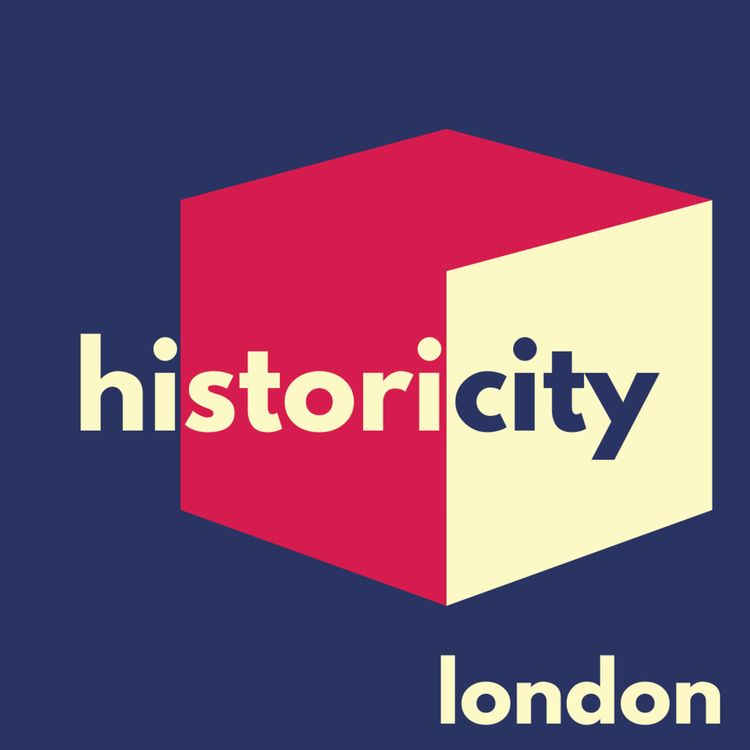Share

historicity
London - LEISURED CITY 1: Aristocratic Capitalism
In this episode, we explore the basic economics of the West End, seeing how a single estate was built up through speculative development.
We walk from St Martin-in-the-Fields to Bedford Square, almost all of it, at one time, part of the Bedford Estate. Before the aristocrats came to town, we’d have been in the countryside, much of it owned by Westminster Abbey. But, in the mid-16th century, the Earl of Bedford gets his hands on Covent Garden. Then, in the early 17th century, his descendants begin to build up the estate. Fifty years later, they marry well and acquire Bloomsbury, where another aristocrat has come up with a template, which determines the subsequent history of the West End: long leases, tall terraces, and garden squares. The fortunes of the estate have waxed and waned over the years. Covent Garden and Bloomsbury have diverged. Still, though, the basic pattern is clear.
You can follow the walk on this map: bit.ly/3WxJ98o
And you can find the full transcript here: bit.ly/3I6AzJR
Follow historicity on Instagram: instagram.com/WALKHISTORICITY
WRITER AND PRESENTER: Angus Lockyer
PRODUCER: Jelena Sofronijevic
More episodes
View all episodes

Introducing: historicity
01:06|historicity is a new series of audio walking tours, which explores how cities got to be the way they are – starting with London.WRITER AND PRESENTER: Angus LockyerPRODUCER: Jelena SofronijevicFollow historicity on Instagram: instagram.com/WALKHISTORICITY
1. London - A TALE OF TWO CITIES 1: The Power of Finance
57:15||Season 1, Ep. 1In this walk, we explore how the cities of London and Westminster birthed the first global city. In this episode, how the square mile grew to control the world’s trade and finance.We wind our way through the City of London, starting at the Monument to the Great Fire of London and ending at St Paul’s Cathedral. From 1500 or so, English merchants, cut off from Europe, were scrambling to exploit the rest of the world. A century later, the city started to develop the institutions it needed to facilitate trade, to finance the state, and to govern its own affairs. Come the 19th century, rail and telegraph, industry and empire transformed the city into the square mile we know today. But even as the temples of finance continue to reach for the sky – and as the City tries to maintain its place in the world – it’s still the product of older, smaller stories.This series was produced in collaboration with the Institute of Historical Research. Find out more at: layersoflondon.orgClick here for the map and full transcript.Follow historicity on Instagram: instagram.com/WALKHISTORICITYWRITER AND PRESENTER: Angus LockyerPRODUCER: Jelena Sofronijevic
2. London - A TALE OF TWO CITIES 2: Connecting Wealth and Power
48:58||Season 1, Ep. 2In this walk, we explore how the cities of London and Westminster birthed the first global city. In this episode, how the space between the two filled up, with lawyers, journalists, and more.We walk from the City of London to the edge of Westminster, starting at St Paul’s Cathedral, and ending at Somerset House. We explore how wealth and power created a magnet for other communities, industries, professions. Initially, the north bank of the river was occupied by the church. By 1500, however, there were lawyers in the Temple and aristocrats further west, soon to be joined by writers and academics. By the second half of the 19th, there were newspapers in the east, universities in the west, and plans to improve the city by clearing out the slums. The monks, the aristocrats, and the journalists are no longer around. But their stories, together with those of the lawyers and the academics, reveal how the City and Westminster were connected, serviced, and sometimes constrained.This series was produced in collaboration with the Institute of Historical Research. Find out more at: layersoflondon.orgClick here for the map and full transcript.Follow historicity on Instagram: instagram.com/WALKHISTORICITYWRITER AND PRESENTER: Angus LockyerPRODUCER: Jelena Sofronijevic
3. London - A TALE OF TWO CITIES 3: The Pull of Power
47:52||Season 1, Ep. 3In this walk, we explore how the cities of London and Westminster birthed the first global city. In this episode, how Westminster grew from a monastery to the centre of a post-imperial state. We wind our way through Westminster, starting in Victoria Embankment Gardens, by the river, and ending up in Parliament Square. We learn how a small monastery became the kernel of a royal court, which eventually moved a bit north, to Whitehall, and became a fount of fashion and favours. We also see how it was constrained by Parliament, which occupied its former palace, and gradually pushed aside. And how the state scrambled to direct and finance wars, from the middle of the second millennium, to administer empire in the 19th century, and eventually, slowly, to provide some welfare to the population of the now United Kingdom. Westminster tells the story of how power was first accumulated and reluctantly shared; how governments remain in thrall to the imperial past and reluctant to face the post-industrial present; and how its subjects have nonetheless managed to carve out some space to have their say.This series was produced in collaboration with the Institute of Historical Research. Find out more at: layersoflondon.orgClick here for the map and full transcript.Follow historicity on Instagram: instagram.com/WALKHISTORICITYWRITER AND PRESENTER: Angus LockyerPRODUCER: Jelena Sofronijevic
1. London - LABOURING CITY 1: Working River
57:24||Season 2, Ep. 1In this episode, we see how the river defined the city – and how the riverside has been transformed, first by trade, then by finance.We’re walking east from Tower Hill into Wapping, ending up next to St George’s Town Hall. The marshes and the mudflats next to the river were already filling up four hundred years ago. Two hundred years later, there was money to be made by building docks, forcing thousands to go elsewhere. By the 1960s, though, trade had moved on and the docks were closed, leaving the space empty again, to be exploited in the last half century in new profit-seeking ways. Through it all, the river attracted immigrants, eager to work, but vulnerable to the relentless demands of the market, the irregular rhythms of charity, and the simmering resentment of those who believed they were here first. We pick up their story in the next two episodes.Click here for the map and full transcript.Follow historicity on Instagram: instagram.com/WALKHISTORICITYWRITER AND PRESENTER: Angus LockyerPRODUCER: Jelena Sofronijevic
2. London - LABOURING CITY 2: Global Labour
52:06||Season 2, Ep. 2In this episode, we catch a glimpse of how London’s economy relied on labour from around the world – and how the East End’s workers were subject to the markets of the City.We start in front of Whitechapel Station and end up in Spital Square. Throughout, we see a contrast between the skyscraping wealth of the City and the lower-slung buildings of the East End. We also discover the way the latter has built up over time. Its slow spread out from the city in the 17th and 18th centuries, as demand grew for skilled manufactures (bells, silk). Its explosive growth in the 19th, as people flocked to the city from the country and abroad, as the price of labour was driven down, and as poverty, overcrowding, and disease began to spread. Finally, its slow “recovery” in the late 20th century, as creatives, city workers, and corporate headquarters began to move east. The streets are also marked by the communities who have passed through them. French Protestants, Ashkenazi Jews, South Asian Muslims. The work of London has often been done by people from elsewhere - we pick up some of their stories in our third and final episode.Click here for the map and full transcript.Follow historicity on Instagram: instagram.com/WALKHISTORICITYWRITER AND PRESENTER: Angus LockyerPRODUCER: Jelena Sofronijevic
3. London - LABOURING CITY 3: Building Homes
51:22||Season 2, Ep. 3In this episode, we trace how people have been able to find a home in the East End, finding some space for faith and family, however small.We start in front of Christ Church Spitalfields and end in Hoxton Square. Already in the early 18th century, the establishment was worried that immigrants were believing the wrong thing. By the late 19th, Protestant chapels and terraced houses were being turned into synagogues. But the authorities also had a housing crisis on their hands. The East End is pockmarked by attempts to put it right, from early cottages, through model dwellings and tenements, to London’s first council estate, on the western edge of Bethnal Green. Its 20th-century successors were less generous, more cramped, even as new waves of immigrants arrived, bringing their own culture and faith. Recent years, though, have seen a tide of wealth flow east, public housing moving into private hands, curry houses turned into coffee shops, factories becoming studios, and street art moving onto gallery walls. Follow the walk on this map: bit.ly/3FZO1xVAnd find the full transcript here: bit.ly/3EdhTps Follow historicity on Instagram: instagram.com/WALKHISTORICITY WRITER AND PRESENTER: Angus LockyerPRODUCER: Jelena Sofronijevic
2. London - LEISURED CITY 2: Social Divide
01:06:07||Season 3, Ep. 2In this episode, we see how some parts of the West End (like Soho) came down in the world, while others (like St James’s) stayed up. We start outside the new, shiny Tottenham Court Road Station and end up just off St James’s Street, where an older world still holds sway. To get there, we’ll have to cross the barrier that is Regent Street, put in place in the early 19th century, to enforce a “complete separation” between the artisans and traders and immigrants of Soho, to the east, and the “nobility and gentry” of St James’s, to the west. But the two neighbourhoods had started up at more or less the same time, in the late 17th century, following the template established in Bloomsbury. Their contrasting fortunes in the centuries since reveal the way in which the streets and squares serve both to reproduce elite privilege, and to keep it at a distance from more diverse, interesting, and innovative – albeit less salubrious – ways of life.You can follow the walk on this map: bit.ly/3hIpAvgAnd you can find the full transcript here: bit.ly/3WNHNXb Follow historicity on Instagram: instagram.com/WALKHISTORICITYWRITER AND PRESENTER: Angus LockyerPRODUCER: Jelena Sofronijevic